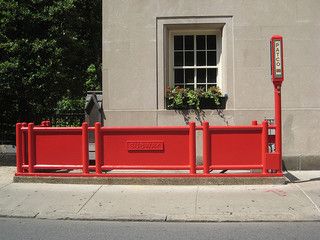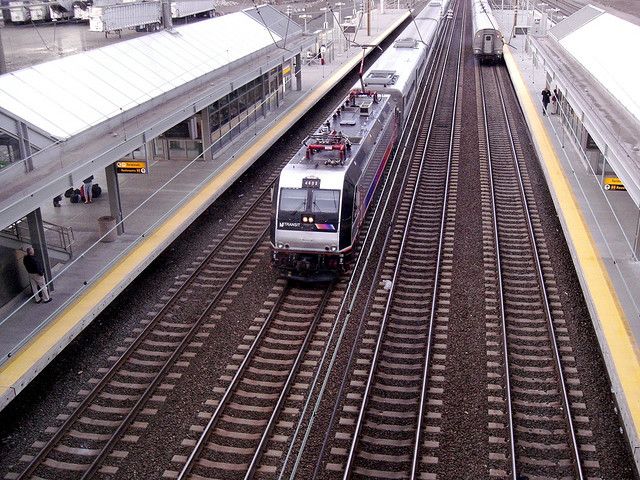Public transportation is riding high, with nearly record-breaking ridership that reflects the shifting economy, the high price of gas and the lifestyle of the young and creative classes. Last year, passenger traffic across the United States rose to its second-highest level since 1957, and in New Jersey, all four public and private rail transit systems are witnessing a steady increase.
But the growing importance of public transportation in New Jersey is not matched by an equally accelerated growth in public funding. In fact, state funding has been more or less flat for the past few years — with the exception of the cancellation of the ARC tunnel, which would have built a third rail tunnel between New Jersey and New York City. New projects are on the boards. There has been an increased call for transit hubs, villages and other smart-growth staples. Indeed the state plan strongly recommends investment in transit-related projects.
But whether any, or all, of these will translate into more funds for public transportation remains to be seen.
What can be seen is the hive of activity that is New Jersey’s mass transit sector.
Amtrak has reached its ninth ridership record in ten years. Although the company is in the midst of planning enhanced New Jersey service, including building a tunnel across the Hudson River, it is expected to take at least 10 years before it’s in service.
New Jersey trails only New York in percentage of commuters who use public transportation (and boasts the third-longest average auto commute in the nation). PATH ridership broke its all-time record in 2011. In South Jersey, PATCO carried more passengers than at any time since 2000, and NJ Transit’s fourth quarter numbers grew 6 percent over the year before. But conventional commuters don’t tell the whole story.
“A lot of our increase in ridership is the non-traditional commuter,” said John Rink, general manager of the PATCO system between Jersey and Philadelphia.
“More young folks are using public transportation, and they’re using it for social purposes: To go out in the city for nightlife and attractions. When you consider the cost of driving, paying the bridge toll and parking, they’re finding public transportation to have more value,” he said.
Indeed, an AAA automobile club survey found that steep gas prices are compelling 14 percent of drivers to use public transportation more often, and 23 percent said they would continue to do so if prices remain high.
And while gas prices may seem like the most obvious driver for using public transportation, the state’s transit officials are also pointing to rising employment; a stronger economic climate overall; increased marketing efforts at NJ Transit; a new fleet of PATH cars and upgrades to its stations; and even mild winter weather.
Transportation and land-use planners predict that favoring public transit is a phenomenon that’s much less fleeting than the fluctuation in gas prices or employment trends. Instead, they largely credit young and creative workers for choosing to live in walkable municipalities with a variety of leisure activities and available transit options for easy access to other, often larger municipalities. What they expect is a future transit-oriented developments (TODs), which are communities that cluster living, working and shopping spaces within one-quarter mile of a transit hub.
Lucy Vandenberg, executive director of PlanSmart NJ, said the creative class, which makes up 35 percent of America’s workforce, “will move to a place first then look for a job second.”
“They want to be with other people who are interesting, where things are happening, and transportation is a big part of it,” she said.
New Jersey is ahead of most other states in terms of its network of public transit routes and the layout of the communities that host its stations, said Tim Evans, research director for New Jersey Future. Thanks to its relatively compact size and history as an older industrialized state anchored on both ends by well-established, major commercial centers, New Jersey is crisscrossed by rail and bus lines, and its population is familiar with the concept of living and working near transit hubs. With some inexpensive rehabbing of older properties and some targeted new development, he said, “I feel like New Jersey in general is reawakening to a resource bequeathed to us from the pre-highway era.”
In a Monmouth University poll released last fall, researchers found two-thirds of New Jerseyans support more of these communities, and almost three-quarters say they would want to live in one, with the same number stating that TOD will facilitate getting around.
Evans feels developers, too, are taking an interest. His own research has shown that throughout the recession, the number of building permit applications has remained more stable in towns where transit stations are conveniently located within walkable reach of housing and retail.
“The market crash of 2008 has caused a lot of people, including developers, to question the wisdom of building so far out and relying on long-distance driving. Some of those outlying residential areas are taking a nose dive,” Evans said.
But just how solid is New Jersey’s public transit future? There’s some cause for optimism on the public funding level. The state Department of Transportation is seeking to restore funding of its Transit Village program to FY 2011 levels, after receiving no funding in FY 2012. There are currently two dozen of these state-authorized TOD communities throughout New Jersey.
And the proposed State Strategic Plan for Development and Redevelopment, which is up for review by the State Planning Commission, emphatically prioritizes such smart growth, noting that “When considering a home purchase, Americans…would like to see improvements to existing public transportation rather than initiatives to build new roads and developments.” In advance of the plan’s adoption, Gov. Chris Christie has ordered the creation of a steering committee to align state agencies’ investments and funds to support these trends.
At the same time, the state’s 13 northernmost counties have received a $5 million grant from the U.S. Department of Housing and Urban Development to plan sustainable communities. Their work will likely include provisions for new and improved train stations, light rail stops and bus facilities.

A PATCO stop, the gateway between south Jersey and Philadelphia. Credit: PlanPhilly on Flickr
As for the transit systems themselves, officials are investing in improvements and expansions they hope will encourage use. NJ Transit is spending $40 million to construct the Pennsauken Transit Center, which will allow passengers to transfer from the River Line light rail — which runs from Camden to Trenton — to the Atlantic City commuter rail service and local bus service. The agency is also studying bus rapid transit alternatives to ease congestion where routes 42, 55 and 676 converge on the border of Camden and Gloucester counties. Also planned is a strategic light rail expansion in Hudson County to connect with proposed residential and commercial development in the Route 440 corridor.
The Port Authority of New York & New Jersey has just completed a four-year, $1 billion project to replace and upgrade PATH cars and stations and is now spending $400 million to finish the installation of a computerized signal system designed to minimize delays and increase the number of trains that can run at one time. And PATCO is participating in a pilot project to test the viability of replacing tickets or passes with “contactless” credit cards that can be simply waved over a payment reader placed at the entrance to each turnstile. PATCO is also refurbishing their fleet with air conditioning, digital monitors and cameras.
As chair of the Senate Surface Transportation and Merchant Marine Infrastructure, Safety and Security Committee, Sen. Frank Lautenberg (D-NJ) has more invested than most in fostering a healthy transportation system across the state and nation. He summed up his view of the needs of New Jersey’s public transportation riders:
“Public transit use is on the rise, and every indicator points to continued growth. The existing trans-Hudson tunnel is more than a century old and is not capable of adequately servicing New Jersey’s growing number of transit riders. I will continue working to advance the Gateway Tunnel project (a trans-Hudson railway initiative proposed by Amtrak) so that our public transit system can meet the demands of the future.”
















